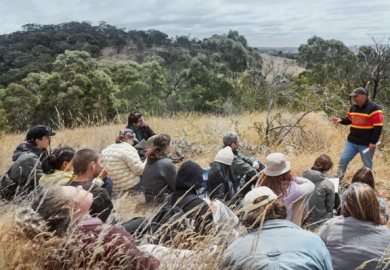This is a book about a city in transition from backwater to megalopolis, driven by a film industry itself in a state of flux, dealing with the fallout from the shift from silent to talking pictures and the dissolution of the studio system. The landscape Jon Lewis surveys is contingent; Hollywood is never exactly a place but a series of fleeting moments in often obscure locations. He describes the employees of the industry meeting to network, to audition and pitch “in restaurants and drug stores, in silent-era mansions…in Hollywood bungalows, in modest houses by the beach and in a movie star’s compound in the Hollywood Hills”. These are the locations of three important films Hollywood made about itself, Sunset Boulevard, In a Lonely Place and The Big Knife. Revealingly, these films show little if anything of the film studio. Hollywood is rarely a concrete reality here, but a set of disconnected practices in dispersed and heterogeneous sites.
This is also a book in large part about death. It starts with a murder, the unsolved 1947 Black Dahlia case, in which the body parts of an aspiring starlet were found in a vacant lot near downtown. It closes with two celebrity deaths: Barbara Payton, a now largely forgotten actress who died derelict in 1967, and Marilyn Monroe, whose 1962 death has attracted as much speculation as that of her alleged lover, John F. Kennedy. In between are any number of other deaths: those of wannabes inhabiting a dangerous demi-monde, killings of and by gangsters associated with Hollywood, deaths simply though excess.
Hollywood emerges as both a fantastic lure – the one place consistently capable of realising The Dream – and a fantastic danger, not only for those unfortunates who try and fail but also for its successes, who often enough find themselves unable to cope. The Los Angeles cityscape that emerges in film, in the media and elsewhere speaks to both qualities, especially the latter. So Hollywood’s LA was always this dangerous, transitory city. The roadside drugstore, the abandoned lot, the crumbling (yet barely old) mansion – these are the cinematic tropes of the emergent metropolis.
Hard-Boiled Hollywood deals in things that have become clichés. Hollywood is success and tragedy in equal measure, its stars likewise, the place fantasy as much as reality. What Lewis makes clear is the extent to which these clichés are based on fact. So he has trawled the newspapers for the crime reports and movie reviews that show how, for example, Billy Wilder’s 1950 black comedy Sunset Boulevard was based on entirely believable premises. It also shows how, as an exposé of the murkiest side of Hollywood, it was also a politically charged work.
In places Lewis’ language slides into a kind of Chandlerese, and it’s unclear where his voice ends and that of his subjects begins. The narrative can be hard going, too, especially on Hollywood’s flirtation with gangster society, simply because there are so many names, and so many scores to settle. But on the way fantasy and reality interact in the films of the period, and on Hollywood’s essential darkness, this is a dense and compelling book.
Richard J. Williams is professor of contemporary visual cultures and head of history of art at the University of Edinburgh. His books include Sex and Buildings (2013).
Hard-Boiled Hollywood: Crime and Punishment in Postwar Los Angeles
By Jon Lewis
University of California Press 248pp, £70.95 and £24.95
ISBN 9780520284319 and 4326
Published 20 June 2017
Register to continue
Why register?
- Registration is free and only takes a moment
- Once registered, you can read 3 articles a month
- Sign up for our newsletter
Subscribe
Or subscribe for unlimited access to:
- Unlimited access to news, views, insights & reviews
- Digital editions
- Digital access to THE’s university and college rankings analysis
Already registered or a current subscriber?




